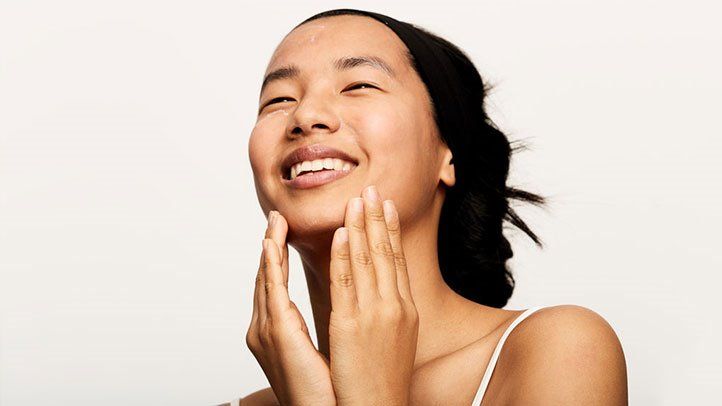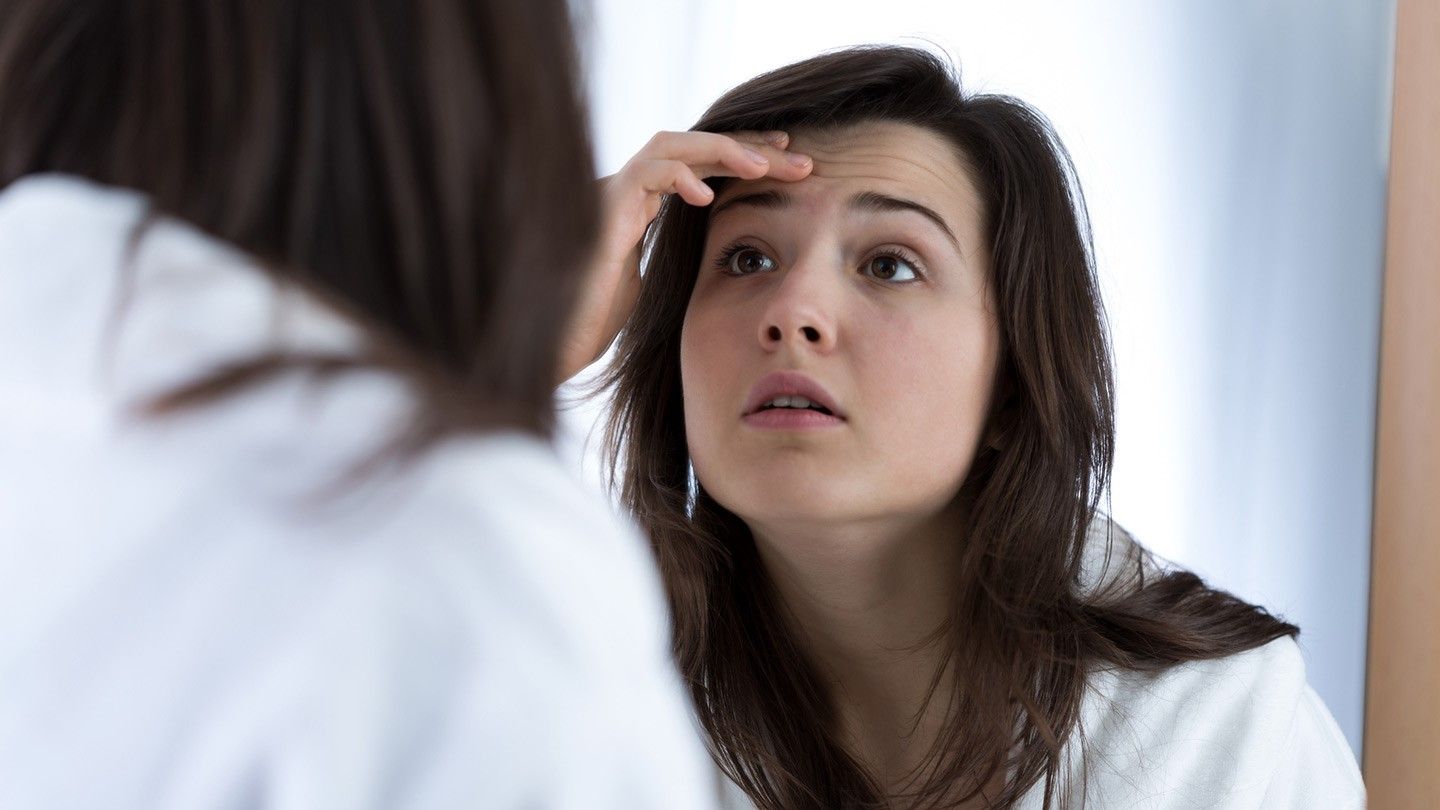Hey there have you ever found yourself staring at a mysterious bump and wondering, "Is this just another breakout or something more serious?" Trust me, I know that feeling all too well. We've all been there second-guessing our skin and scrolling endlessly for answers.
Right now, there's a question on a lot of minds: monkeypox vs acne. How do you tell the difference? And more importantly, when should you actually be concerned?
Let's dive into this together, without all the medical jargon. I'm here to walk you through what you need to know, what to watch for, and when it's time to get some help.
Understanding Monkeypox vs Acne
What Exactly Is Monkeypox?
First things first let's talk about what monkeypox actually is. You might know it better as mpox, which is what health experts have been calling it recently. It's a viral infection that causes a telltale rash, and while it's been around for a while, it's been on people's minds lately.
Here's the thing you catch mpox through close contact with someone who has it. That might sound scary, but here's some relief: it's not floating around in the air like a cold. You'd typically need to be in pretty close quarters, maybe sharing personal items or having skin-to-skin contact.
The reason so many people get confused between monkeypox vs acne is because early mpox rashes can look surprisingly similar to pimples. It's no wonder you're double-taking in the mirror!
Acne: More Than Just Zits
Now, let's chat about acne our old acquaintance that just won't quit. You probably already know your skin type pretty well by now, but here's a quick refresher on what's really going on when those pesky breakouts happen.
Acne is your skin's response to a whole cocktail of things: hormones, oil production, bacteria, and sometimes even your diet or stress levels. It's like your skin's way of telling you, "Hey, something's up here!"
From whiteheads to those angry red cysts that seem to appear right before photo day, acne comes in all shapes and sizes. And unlike mpox, it's definitely not contagious. That's a relief, right?
Comparing Monkeypox vs Acne Symptoms
Spotting Monkeypox Rashes
Okay, this is where things get interesting. Monkeypox rashes have their own personality, and once you know what to look for, you'll start to see the differences clearly.
Typically, mpox rashes show up on your face, hands, feet, and sometimes in more private areas. They tend to follow a pattern starting as small bumps that fill with fluid, then eventually scab over. Think of it like watching a time-lapse of a wound healing, but it takes place over several weeks.
Here's something important to note: mpox usually comes with some warning signs before the rash appears. We're talking about fever, headaches, muscle aches, and that general "I don't feel quite right" feeling. It's like your body's alarm system going off before the visible signs show up.
Recognizing Acne Patterns
Acne, on the other hand, feels more like that friend who shows up unannounced. One day you're clear-skinned, the next you're wondering where these bumps came from.
Your acne tends to hang out in familiar spots your T-zone, maybe along your jawline, or scattered across your back. These blemishes come in different flavors: whiteheads that look like tiny pearls, blackheads that are just clogged pores, and those deeper, more stubborn cysts that feel like little marbles under your skin.
The beauty of acne (yes, there's some beauty here!) is that it usually doesn't come with those full-body warning signs. No fever, no fatigue it's pretty much just a skin situation.
Key Differences in a Glance
Now, let's lay it all out side by side so you can really see the contrast:
| Feature | Monkeypox (Mpox) | Acne |
|---|---|---|
| Location | Face, hands, feet, genital area | Face, chest, back |
| Lesion Type | Deep, fluid-filled bumps | Whiteheads, blackheads, cysts |
| Starts With | Fever, fatigue first | Clogged pores |
| Pain Level | Often painful | Mild to moderate pain |
| Duration | Weeks (until scab falls off) | Varies, clears in days to weeks |
| Contagious? | Yes | No |
When to Seek Help
It's Probably Just Acne When...
If you're looking at your skin and thinking "monkeypox vs acne," ask yourself a few questions:
Do you feel generally okay otherwise? No fever, no weird fatigue, no aches and pains? That's a good sign that whatever's popping up on your skin is probably just a regular breakout.
Has this type of breakout happened to you before? Do you recognize your usual acne patterns? Our skin has a way of being consistent the same spots, the same types of blemishes. It's like having a conversation with an old friend.
And here's the real test does your skin usually respond to your go-to acne treatments? If your trusty spot treatment is doing its job, that's another clue that you're dealing with familiar territory.
Time to Call a Doctor About Mpox
Now, there are times when it's better to be safe than sorry. Remember how I mentioned those warning signs that come before mpox rashes? If you're experiencing that whole-body "off" feeling along with new skin changes, that's your cue to get some professional input.
If the rash is spreading quickly or showing up in unusual places like your hands or feet that's worth mentioning to a healthcare provider. And if you've had close contact with someone who's been diagnosed with mpox, don't hesitate to reach out for guidance.
Trust your instincts here. You know your body better than anyone else, and if something feels truly different from your usual skin adventures, it's okay to ask for help.
Taking Care of Yourself
What to Do If You Suspect Mpox
If you're thinking "this might be more than just monkeypox vs acne," here's how to take care of yourself while you figure things out:
First, give yourself some space from others, especially those who might be more vulnerable young children, elderly family members, or anyone with a compromised immune system. This isn't because you're dangerous, but because you want to be thoughtful about keeping everyone healthy.
For comfort, over-the-counter pain relievers can help with any discomfort. And keep those hands off your face I know it's tempting, but picking at suspicious bumps will only make things worse.
Good Skin Care Habits
Whether you're dealing with regular breakouts or just want to be gentle with your skin during uncertain times, here are some basics that work wonders:
Cleanse gently no need for harsh scrubs that leave your skin feeling tight and irritated. Your skin barrier is your friend, not your enemy.
Moisturize, even if your skin feels oily. Think of it as giving your skin a drink of water rather than adding oil to a greasy pan.
And please, please, please resist the urge to pick at anything. I know it's hard, but both acne and mpox heal so much better when left alone. Your future self will thank you for the patience.
Real Talk About Skin Concerns
Here's what I want you to remember most of all: questioning whether you're looking at monkeypox vs acne shows that you're paying attention to your body, and that's a really good thing.
Yes, mpox can sometimes look like acne in its early stages that's why health experts emphasize the importance of looking at the whole picture, not just the skin changes alone.
And while acne isn't connected to your immune system the way mpox is, both conditions remind us that our skin is often our body's first line of communication. It's literally how we "wear" our health on our sleeves or in this case, on our faces!
Moving Forward with Confidence
So here we are at the end of our chat about monkeypox vs acne and honestly, I hope you're feeling a bit more confident about telling them apart.
Remember, most skin bumps are completely normal parts of life. But when something feels genuinely different when your instincts are saying "this isn't quite right" there's no shame in reaching out for professional guidance.
Your peace of mind matters just as much as your physical health. And sometimes, the most helpful thing you can do is simply ask the right questions and know where to find reliable answers.
Take care of your skin, listen to your body, and don't let the occasional mystery bump throw you off your game. You've got this and you're not navigating these questions alone.
FAQs
How can I tell if a rash is monkeypox or just a regular acne breakout?
Monkeypox usually starts with fever, fatigue, or muscle aches before a rash appears, and the lesions are deep, fluid‑filled bumps that can be painful and may show up on the hands, feet, or genital area. Acne lesions are typically whiteheads, blackheads or cysts confined to the face, chest, and back, without systemic symptoms.
Is monkeypox contagious while the rash looks like acne?
Yes. Mpox can spread through direct skin‑to‑skin contact or sharing contaminated items, even before the rash fully develops. Acne is not contagious at all.
What should I do if I suspect I have monkeypox?
Isolate yourself from others, especially vulnerable people, avoid touching the lesions, take over‑the‑counter pain relievers if needed, and contact a healthcare provider promptly for testing and guidance.
Can I treat monkeypox rash the same way I treat acne?
No. Using acne spot treatments or picking at the lesions can worsen monkeypox and increase the risk of spreading the virus. Keep the area clean, avoid picking, and follow medical advice.
When is it safe to assume a new skin bump is just acne?
If you feel well overall—no fever, fatigue, or body aches—and the bump appears in a typical acne location (like the T‑zone or back) and responds to your usual acne regimen, it’s likely a regular breakout.
Disclaimer: This article is for informational purposes only and does not constitute medical advice. Always consult with a healthcare professional before starting any new treatment regimen.
Related Coverage
Can sugary sodas lead to more acne? Ingredients like sugar and caffeine may spike hormones, inflammation, and sebum production. Learn what the research says....
Making out can cause acne breakouts by transferring oils, bacteria, and irritants between partners' faces. Learn expert tips to prevent pimples from kissing....
Discover the top non-comedogenic and oil-free moisturizers for hydrating acne-prone skin without clogging pores. Includes reviews of moisturizers with hyaluronic acid....
Purple wipes are disinfecting cloths used in hospitals to kill germs and prevent infection transmission. Learn why hospitals use them and best practices for staff....
Black dots on toilet paper are typically harmless, but may signal hemorrhoids, fissures, or sensitive skin. Learn when to see a doctor and how to find relief....
Some report acne breakouts when taking ashwagandha supplements. Learn the theories behind ashwagandha causing acne and proactive steps to reduce skin irritation....
Pimples on the knee are common and have various causes. Learn how to treat and prevent knee pimples at home, when to seek medical care, and how dermatologists can help....
Dermatologists confirm the inflammatory effects of soda can trigger adult acne flare-ups. Excess sugar, caffeine, acids, additives and sodas' impact on gut health explain the pimple connection....
Learn the key characteristics of a smooth, healthy natural nail surface. Discover what causes abnormalities and when to see a doctor for nail surface changes....
2025 Aczone cost: see co‑pay ranges, use coupons or discount cards, and switch to generic dapsone to lower out‑of‑pocket price....





